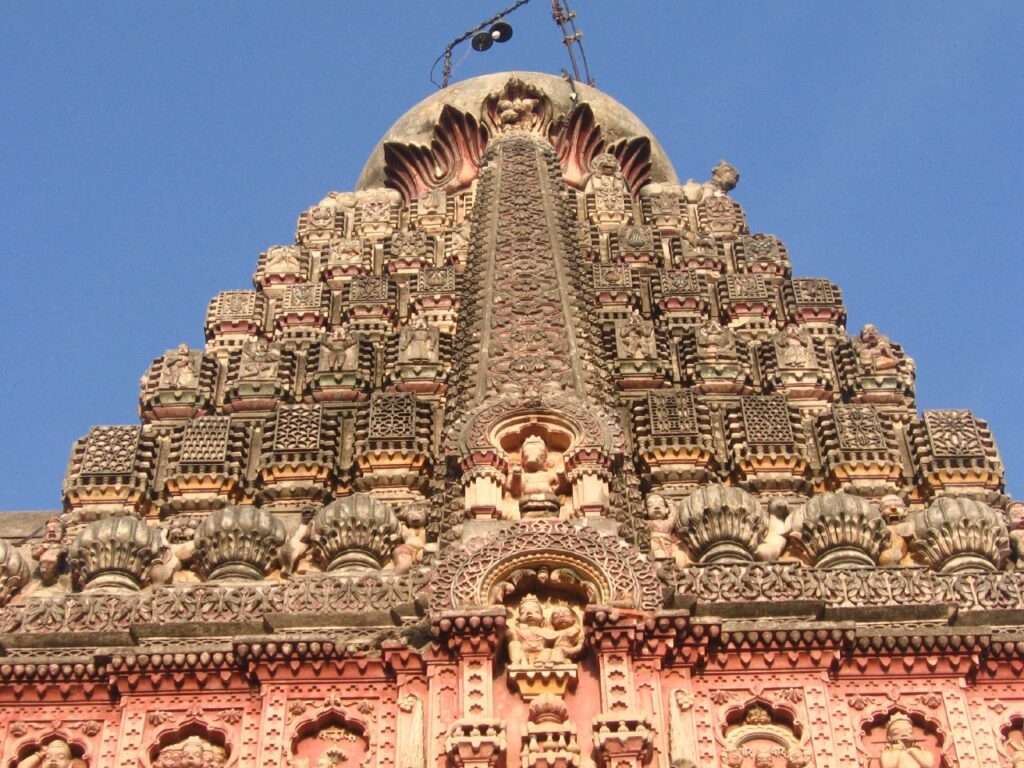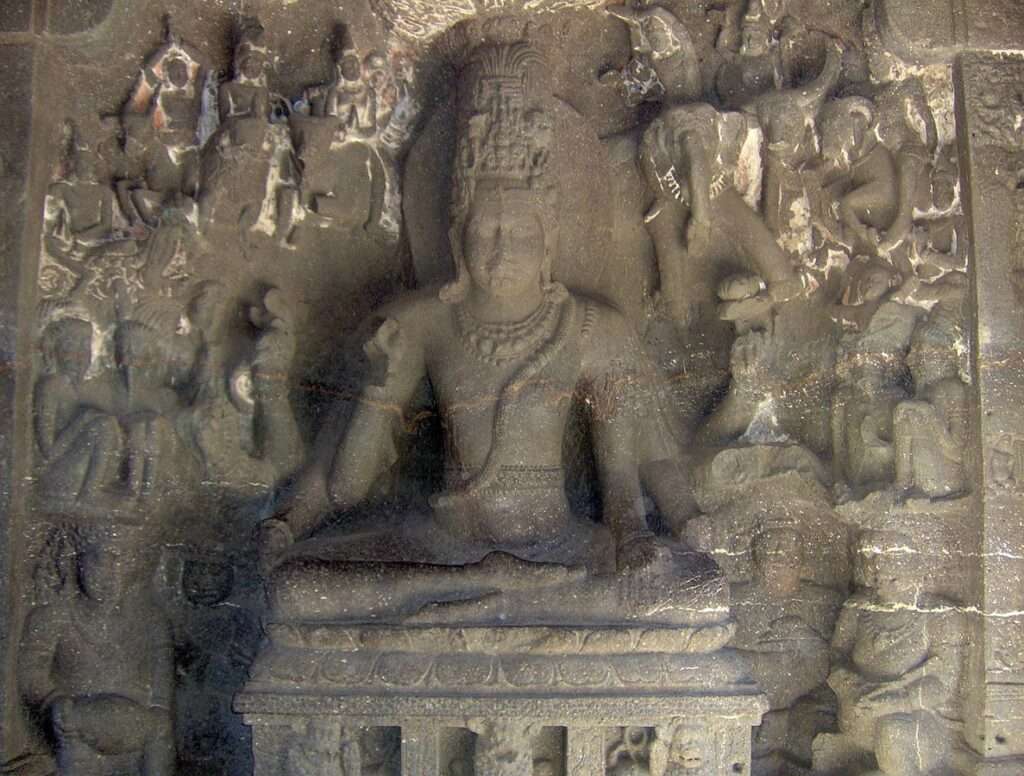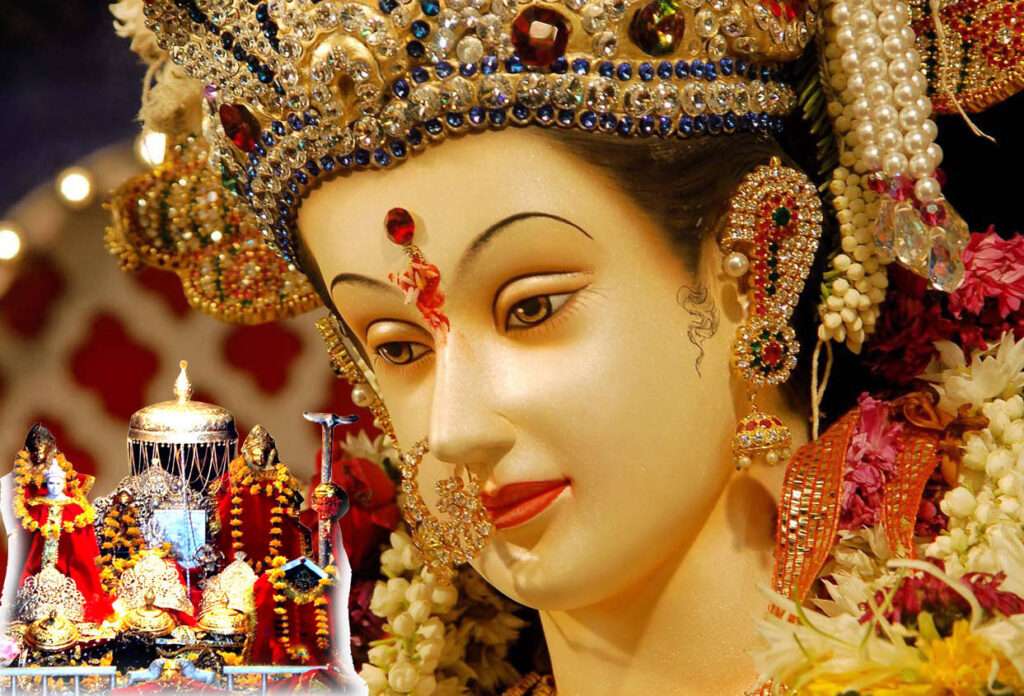Introduction
Grishneshwar Temple is one of the 12 Jyotirlingas of Lord Shiva, located in the Aurangabad district of Maharashtra. It is also known as Ghrneshwar or Ghushmeshwar Temple, and it is the smallest Jyotirlinga temple in India. In this blog post, we will explore the history, architecture, significance, timings, poojas, and travel tips of this ancient and sacred temple.
Table of Contents
History of Grishneshwar Temple
The history of Grishneshwar Temple dates back to the 13th century, when it was first built by Maloji Bhosale, the grandfather of Chhatrapati Shivaji Maharaj. However, the temple was destroyed and rebuilt several times during the conflicts between the Delhi Sultanate, the Mughal Empire, and the Maratha Empire. The current structure of the temple was constructed in the 18th century by Queen Ahilyabai Holkar of Indore, who was a devout devotee of Lord Shiva and a patron of many Hindu temples across India.
According to a legend, there was once a devout woman named Kusuma, who worshipped Lord Shiva with a Shivalinga made of sand every day. She was married to a Brahmin named Sudharma, who had another wife who was jealous of Kusuma’s devotion. One day, the second wife killed Kusuma’s son and threw him into a nearby lake. Kusuma continued to worship Lord Shiva with her sand Shivalinga, and prayed for her son’s life. Lord Shiva was pleased with her faith and devotion, and restored her son’s life. He also appeared before her and her husband, and asked them to name a wish. They wished for Lord Shiva to reside there forever as a Jyotirlinga, and thus Grishneshwar Jyotirlinga was established.
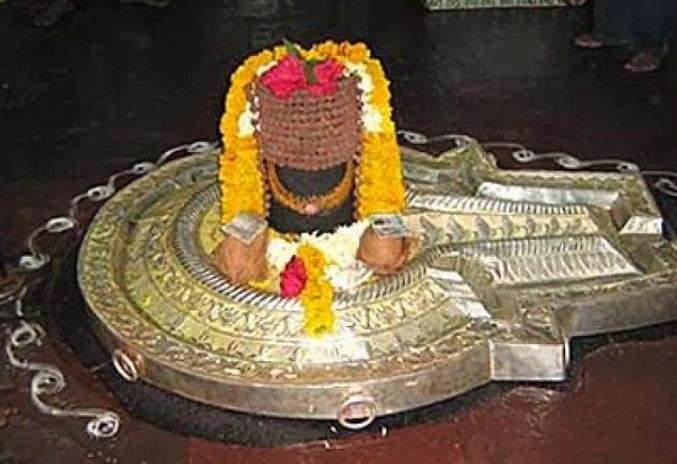
Travel Tips for Grishneshwar Temple
The Grishneshwar Temple is located in Verul village, about 30 km from Aurangabad city in Maharashtra. The temple is easily accessible by road, rail, and air from various parts of India. Here are some travel tips for visiting Grishneshwar Temple:
Here are the distances and travel times from major cities to Grishneshwar:
| City | Distance (km) | Travel Time (hrs) |
|---|---|---|
| Delhi | 1,178 | 17 |
| Mumbai | 889 | 13 |
| Aurangabad | 22 | 0.5 |
| Jaipur | 672 | 10 |
| Nagpur | 552 | 8 |
The nearest airport is Chhatrapati Sambhaji Nagar Airport in Aurangabad, which is connected to major cities like Mumbai, Delhi, Hyderabad, Bangalore, etc. by domestic flights. From the airport, one can hire a taxi or take a bus to reach the temple.
The nearest railway station is Chhatrapati Sambhaji Nagar Railway Station in Aurangabad, which is connected to major cities like Mumbai, Pune, Nagpur, Hyderabad, etc. by trains. From the railway station, one can hire a taxi or take a bus to reach the temple.
The nearest bus stand is Ellora Bus Stand, which is about 2 km from the temple. There are regular buses from Aurangabad and other nearby towns to Ellora Bus Stand. From there, one can walk or take an auto-rickshaw to reach the temple.
The best time to visit Grishneshwar Temple is between June and August, when the weather is pleasant and the temple is decorated for Shravan Maas. However, one should be prepared for long queues and crowds during this time.
The dress code for entering Grishneshwar Temple is traditional Indian attire. Men have to wear dhoti (a long cloth wrapped around the waist) and go shirtless. Women have to wear saree or churidar (a long tunic with pants). Western clothes are not allowed inside the temple premises.
The photography and videography are not allowed inside the temple premises. One has to deposit their cameras and mobile phones at the locker facility near the entrance of the temple.
There are many shops and stalls near the temple that sell souvenirs, religious items, snacks, etc. One can also find hotels and restaurants nearby that offer decent accommodation and food options.
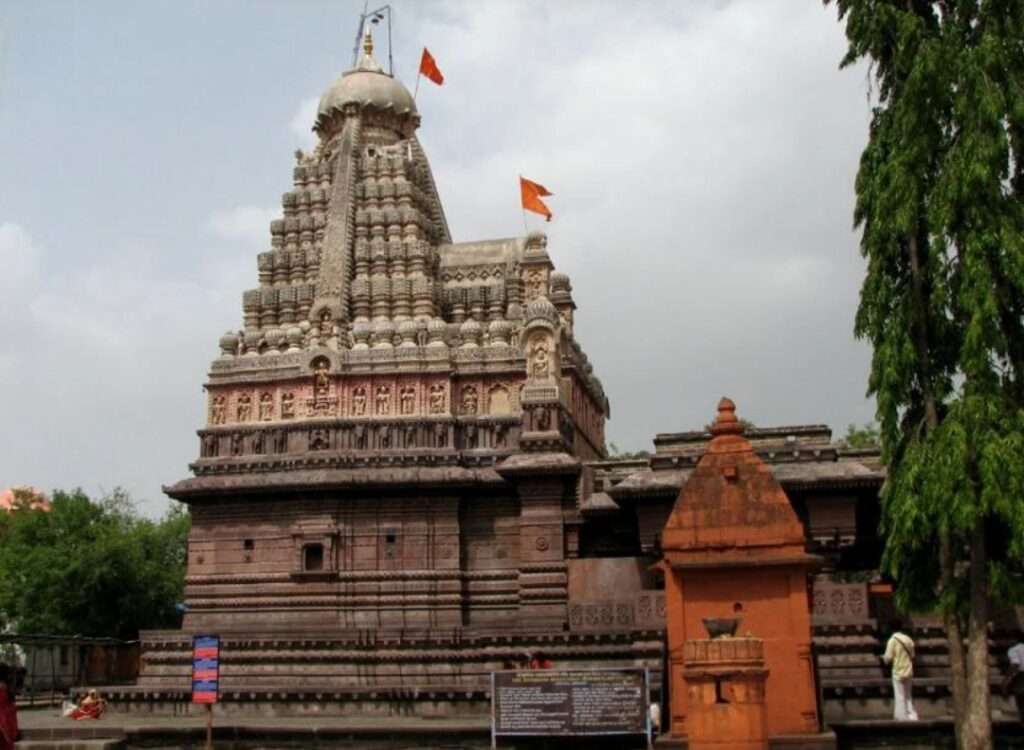
Image Source : Wikimedia Commons
Architecture of Grishneshwar Temple
The Grishneshwar Temple is an example of Maratha temple architecture, built with red rocks and adorned with carvings and sculptures. The temple has a five-tiered shikara (spire), which rises above the sanctum sanctorum (garbha-griha) where the Jyotirlinga is enshrined. The Jyotirlinga faces eastward, and is accompanied by an idol of Goddess Parvati, also known as Grishneshwari. The temple complex also has a Nandi bull statue, which faces the Jyotirlinga.
The temple has a hall (sabha-mandapa) supported by 24 pillars, which are decorated with various scenes from Hindu mythology, especially related to Lord Shiva. The hall leads to the sanctum sanctorum, which has a silver-plated door with images of Shiva’s attendants. The walls of the sanctum sanctorum are also covered with silver plates with inscriptions of Shiva’s names.
The temple has a unique feature that only men are allowed to enter the sanctum sanctorum, and they have to go bare-chested as per the local tradition. Women can only worship from outside the sanctum sanctorum.
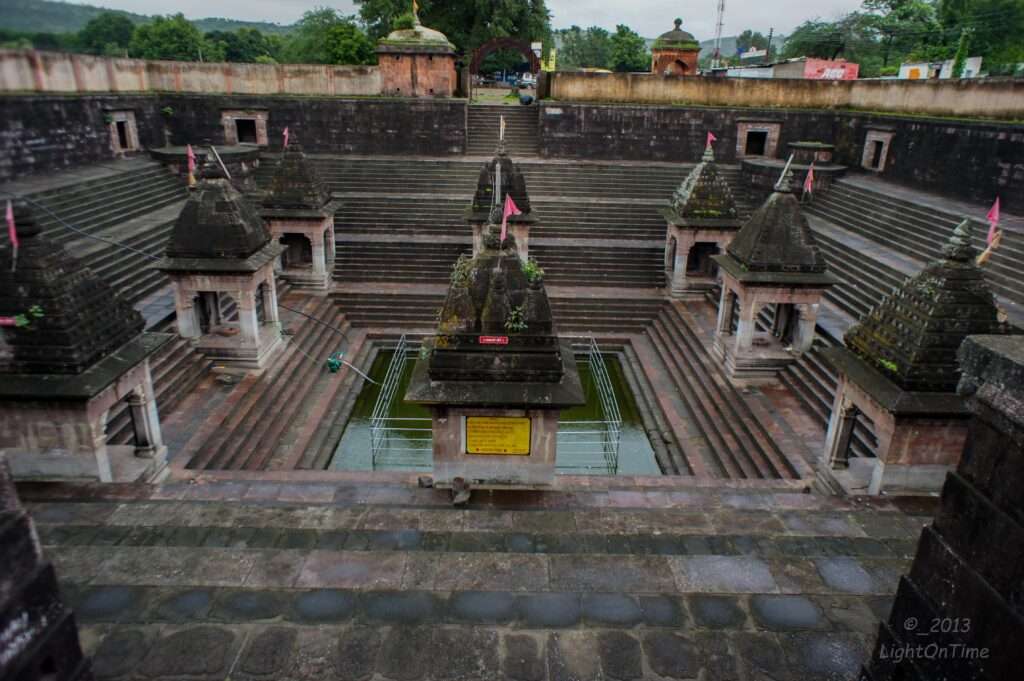
Significance of Grishneshwar Temple
The significance of Grishneshwar Temple lies in its status as one of the 12 Jyotirlingas of Lord Shiva, which are considered to be the most sacred abodes of Lord Shiva in Hinduism. According to Hindu scriptures, Lord Shiva manifested himself as a pillar of light (Jyotirlinga) at 12 different locations across India, where he was worshipped by different devotees in different forms. Each Jyotirlinga represents a different aspect of Lord Shiva’s power and grace.
Grishneshwar Jyotirlinga is believed to be the last Jyotirlinga that was established by Lord Shiva himself, after granting the wish of Kusuma and Sudharma. The name Grishneshwar means “the lord of compassion”, and it signifies Lord Shiva’s benevolence towards his devotees who worship him with sincerity and devotion.
Devotees believe that visiting Grishneshwar Temple can bestow them with blessings of Lord Shiva and Goddess Parvati, and fulfill their wishes and desires. They also believe that worshipping at Grishneshwar Temple is equivalent to worshipping at all the 12 Jyotirlingas, as it is the culmination of Lord Shiva’s manifestation.
Timings and Poojas of Grishneshwar Temple
The Grishneshwar Temple is open for darshan (worship) from 5:30 am to 9:30 pm every day. However, during the month of Shravan (July-August), which is considered to be the most auspicious month for Lord Shiva, the temple remains open from 3:00 am to 11:00 pm to accommodate the large number of devotees who flock to the temple.
The temple also performs various poojas (rituals) and aartis (prayers) throughout the day, which devotees can participate in by paying a nominal fee. The timings and details of the poojas and aartis are as follows:
Mangal Aarti: This is the first aarti of the day, performed at 4:00 am, before the temple opens for darshan. It involves waking up Lord Shiva and Goddess Parvati with hymns and chants, and offering them flowers, milk, and water.
Jalhari Sangan: This is a ritual performed at 8:00 am and 4:00 pm, in which devotees offer water to the Jyotirlinga in a copper vessel (jalhari), and receive the holy water as prasad (blessed food).
Maha Prasad: This is a ritual performed at 12:00 pm, in which devotees offer cooked food to Lord Shiva and Goddess Parvati, and receive the same as prasad.
Evening Aarti: This is the second aarti of the day, performed at 7:30 pm, after the temple closes for darshan. It involves offering lamps, incense, and flowers to Lord Shiva and Goddess Parvati, and singing praises of their glory.
Night Aarti: This is the last aarti of the day, performed at 10:00 pm, before the temple closes for the night. It involves putting Lord Shiva and Goddess Parvati to sleep with hymns and chants, and offering them milk and water.
Conclusion
Grishneshwar Temple is a must-visit destination for anyone who wants to experience the spiritual and cultural richness of India. It is not only a place of worship but also a place of history, art, and architecture. It is a place where one can feel the presence of Lord Shiva and Goddess Parvati, and seek their blessings for a happy and prosperous life.
Frequently asked questions
Q: Where is Grishneshwar temple located?
A: Grishneshwar temple is located in Verul, near Ellora Caves in the state of Maharashtra, India.
Q: Who is the presiding deity of Grishneshwar temple?
A: The presiding deity of Grishneshwar temple is Lord Shiva. He is worshipped in the form of Grishneshwar Jyotirlinga.
Q: What is the significance of Grishneshwar temple?
A: Grishneshwar temple is one of the 12 Jyotirlingas, which are considered to be the most sacred abodes of Lord Shiva. It holds great religious and spiritual significance for devotees of Lord Shiva.
Q: What is the architectural style of Grishneshwar temple?
A: The architectural style of Grishneshwar temple is predominantly influenced by the Maratha style of architecture, with intricate carvings and sculptures.
Q: Can you provide some historical background about Grishneshwar temple?
A: According to legends, Grishneshwar temple was built by a devotee named Ahilyabai Holkar, who was the queen of the Malwa kingdom during the 18th century. The original temple is believed to have been constructed in the 14th century.
Q: Are there any festivals celebrated at Grishneshwar temple?
A: Yes, Mahashivaratri is the most significant festival celebrated at Grishneshwar temple. It is the night dedicated to Lord Shiva and is observed with great devotion and enthusiasm by the devotees.
Q: Can visitors offer prayers at Grishneshwar temple?
A: Yes, visitors are allowed to offer prayers at Grishneshwar temple. Devotees can perform rituals, offer flowers, light lamps, and seek the blessings of Lord Shiva.
Q: Is there any dress code for visiting Grishneshwar temple?
A: While there is no strict dress code, it is advisable to dress modestly and respectfully when visiting religious places in India. It is customary to cover the shoulders and legs, and to remove footwear before entering the temple premises.
Q: Are there any other attractions near Grishneshwar temple?
A: Yes, the famous Ellora Caves, a UNESCO World Heritage Site, are located near Grishneshwar temple. These ancient rock-cut caves showcase magnificent sculptures and architectural marvels.
Q: What are the visiting hours of Grishneshwar temple?
A: Grishneshwar temple is usually open for darshan (worship) from early morning till late evening. The exact visiting hours may vary, so it is recommended to check the local timings before planning a visit.
